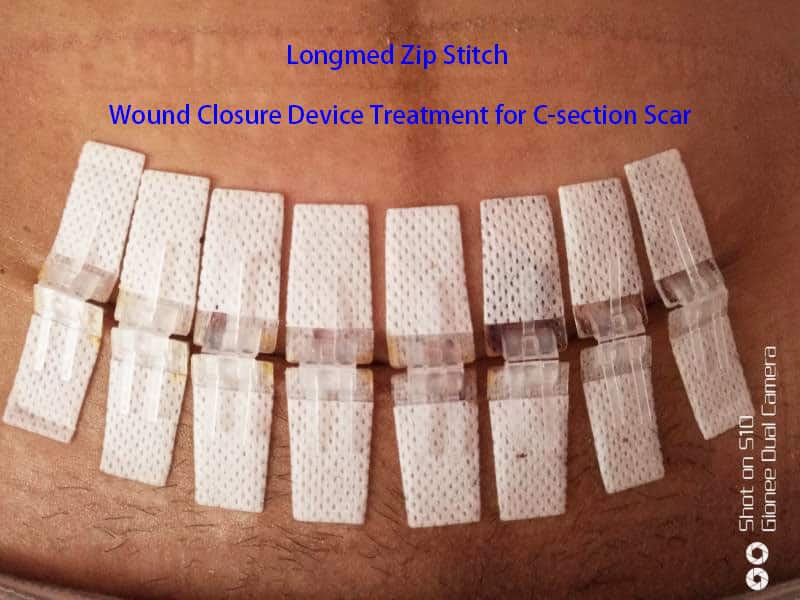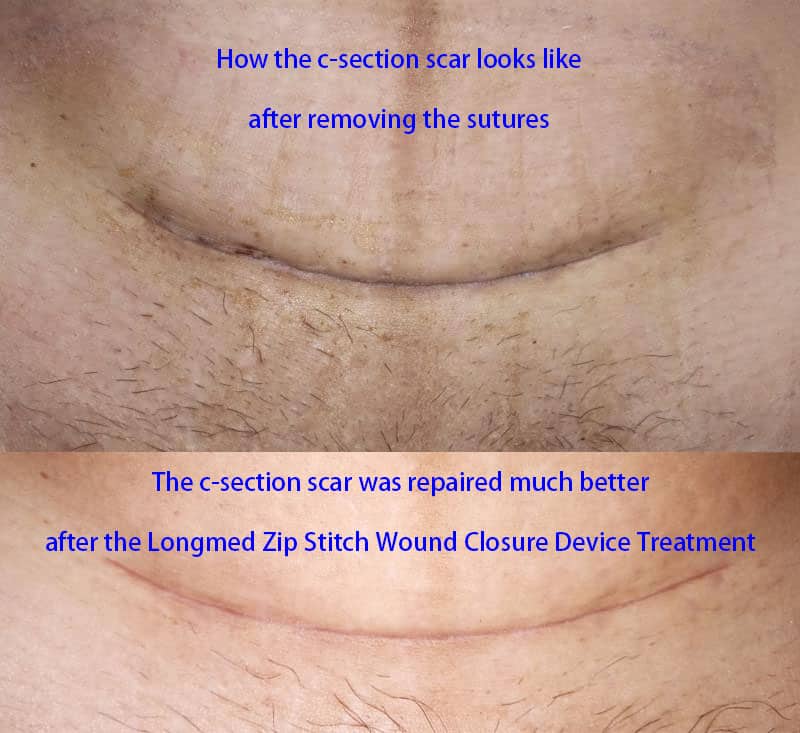- No.277 Shuangshan Road,Deqing,Zhejiang,CHINA
- [email protected]
- WhatsApp+8613065722186
Caesarean Cesarean Section C-section Scar Treatment
1.What can I do for the c-section scar treatment?
C-section scar treatment effectively involves a combination of proper wound care, scar management techniques, and sometimes medical treatments. Here are several steps and options to consider for treating your C-section scar:
Immediate Post-Surgery Care
-
Follow Your Doctor’s Instructions:
- Keep the incision clean and dry.
- Follow any specific instructions about how to care for the incision site, such as changing dressings or using prescribed ointments.
-
Avoid Strain:
- Avoid heavy lifting and strenuous activities to prevent stress on the incision.
- Support your abdomen with a pillow when coughing, sneezing, or laughing.
-
Watch for Signs of Infection:
- Monitor the incision for redness, swelling, increased pain, or discharge.
- Contact your healthcare provider if you notice any signs of infection.
2.Do we have any other ways for the c-section scar treatment?
Yes we do.After we remove the sutures or sutures were absored,the scar is still obvious and is not smooth.We can use the Longmed Zip Stitch Wound Closure Device to avoid the scar hypertrophy, and this is very good way for the c-section scar treatment.
Longmed ZipStitch Wound Closure Device consists of medical adhesive tape, one and two pair of polypropylene hasp and liner. The tape is a porous nonwoven backing coated with a pressure-sensitive hypoallergenic adhesive. The non-invasive technique reduces tissue trauma and improve patient comfort, and possibly causing less scarring after healing.Longmed ZipStitch Wound Closure Device has been used by the surgeons for the c-section scar treament for years and we have plenty of actual applications in the hospitals.

2.1 Before and After C-section Scar Treatment by Longmed Zipstitch Wound Closure Device

3.Can we have sex 4 weeks after c-section?
It is generally recommended to wait at least six weeks after a C-section before resuming sexual activity. This allows time for the incision and internal tissues to heal properly and reduces the risk of infection and other complications. However, every individual heals at a different rate, so it’s important to consult with your healthcare provider to get personalized advice based on your specific situation and recovery progress.
Here are some factors to consider:
Healing of the Incision: The external incision and the internal wound need time to heal completely. Engaging in sexual activity too soon can put strain on the healing tissues.
Bleeding: Postpartum bleeding (lochia) can continue for several weeks. Waiting until the bleeding has stopped helps reduce the risk of infection.
Comfort and Pain Levels: Ensure that you feel comfortable and are not experiencing pain around the incision site or internally. Pain during intercourse can be a sign that more healing time is needed.
Emotional Readiness: Beyond physical healing, consider your emotional readiness. The postpartum period can be emotionally challenging, and it’s important to feel mentally prepared for intimacy.
Consult Your Doctor: Always follow the guidance of your healthcare provider, who can assess your healing and provide specific recommendations.
4.When can I start walking after c-section scar?
You can start walking as soon as you feel ready, usually within the first day or two after a C-section. Walking is encouraged because it promotes circulation, helps prevent blood clots, and aids in the recovery process. However, it’s important to take it slow and listen to your body. Here are some guidelines to follow:
First Few Days:
- Start with short, gentle walks, such as around your hospital room or to the bathroom.
- Use support if needed, such as holding onto someone’s arm or using a walker.
- Focus on standing up straight to help your abdominal muscles heal properly.
First Week:
- Gradually increase the distance and duration of your walks.
- Avoid overexertion and pay attention to your body’s signals. Stop if you feel pain, dizziness, or excessive fatigue.
First Few Weeks:
- Continue to increase your walking activity as you feel stronger.
- Aim for several short walks throughout the day rather than one long walk.
After Six Weeks:
- Most women can resume normal physical activity, including more vigorous walking, around six weeks postpartum, but this varies based on individual recovery.
- Always get clearance from your healthcare provider before resuming any strenuous activity or exercise routines.
